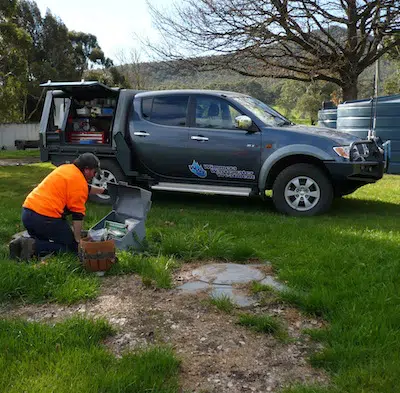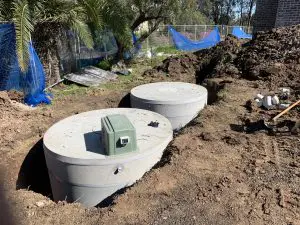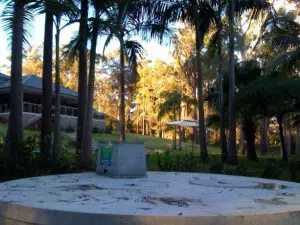Waste Not, Want Not: Transforming Septic Tank Sludge into Resources
Victoria’s charm lies in its dynamic fusion of urban living and natural beauty. While the city’s bustling lifestyle attracts many, it often comes with the challenge of limited space, especially in urban areas. This spatial constraint extends to crucial aspects of homeownership, including wastewater management. In this comprehensive guide, we’ll explore how Aerated Wastewater Treatment Systems (AWTS) offer compact, space-efficient solutions tailored for smaller urban lots in Victoria, ensuring efficient and eco-friendly wastewater treatment.
Understanding the Urban Space Dilemma
Living in Victoria urban areas often means enjoying the vibrancy of city life but compromising on space. Smaller lots, closely packed neighborhoods, and limited backyard space pose challenges for homeowners when it comes to essential utilities like septic systems or AWTS. Traditional septic systems can be challenging to install in these circumstances, making AWTS a viable alternative.

Fertilizer Revolution:
One of the groundbreaking ways Australians are repurposing septic tank sludge is by turning it into nutrient-rich fertilizer. Instead of contributing to landfill concerns, this organic matter is being utilized to enhance soil fertility, particularly in regional areas where agriculture plays a vital role in community livelihoods.
Case Study: The Green Thumb Community in Regional Victoria
The Green Thumb Community in Regional Victoria is spearheading a local initiative to transform septic tank sludge into organic fertilizer. By partnering with local farmers, they’ve created a closed-loop system where the nutrient-rich sludge is carefully processed and blended into high-quality fertilizer, subsequently used to enrich the soil in nearby agricultural lands. This not only reduces waste but also supports sustainable farming practices.
Energy from Waste:
In the pursuit of cleaner and greener energy solutions, Australians are exploring how septic tank sludge can contribute to biogas production. The anaerobic digestion of sludge generates methane, which can be harnessed for energy. This innovative approach not only addresses waste management challenges but also taps into the potential of renewable energy.
Case Study: Renewable Energy Hub in Regional New South Wales
In Regional New South Wales, a collaborative effort between local councils and renewable energy companies has resulted in the establishment of a renewable energy hub. Here, septic tank sludge is processed through advanced anaerobic digestion systems, producing biogas that is utilized to generate electricity. This not only diverts waste from landfills but also contributes to the region’s energy needs sustainably.
Community-Supported Composting:
Recognizing the value of septic tank sludge in enhancing soil health, some regional communities are adopting community-supported composting programs. Residents willingly contribute their sludge to a centralized composting facility, where it undergoes controlled decomposition. The resulting compost is then distributed back to community members for use in gardens and landscaping.
Case Study: Compost Collective in South Australia’s Barossa Valley
The Barossa Valley Compost Collective has become a local success story. Residents actively participate in depositing their septic tank sludge at designated collection points. The collective manages the composting process, producing nutrient-rich compost that is returned to contributors. This initiative not only reduces the environmental impact of waste disposal but also fosters a sense of community engagement.
Building Materials Innovation:
Looking to the future, there’s a growing exploration of septic tank sludge as a raw material for innovative building materials. Researchers and entrepreneurs are investigating ways to extract valuable components from sludge to create sustainable construction materials, contributing to a circular economy in the building sector.
Case Study: Sustainable Housing Project in Regional Queensland
A sustainable housing project in Regional Queensland is incorporating septic tank sludge-derived materials in construction. This initiative aims to showcase the feasibility of utilizing sludge in eco-friendly building practices. The project not only reduces the demand for traditional raw materials but also highlights the versatility of septic tank sludge in sustainable development.
A Circular Economy Vision for Regional Australia
As regional communities in Australia lead the charge in repurposing septic tank sludge, a circular economy vision is emerging. What was once considered a waste burden is now recognized as a valuable resource that can contribute to agricultural productivity, energy generation, community composting, and even sustainable construction.
By adopting innovative approaches to septic tank sludge management, regional Australians are not only addressing local waste challenges but also actively participating in the creation of a circular economy. As we continue to unlock the potential within these waste streams, we move one step closer to a future where “waste not, want not” becomes a guiding principle for sustainable living in regional Australia. Through these inventive solutions, we are transforming the narrative around septic tank sludge, showcasing its role as a valuable contributor to a more environmentally conscious and resource-efficient future.
For a Free Quote and Sizing on all Septic Tanks Made in Australia call the team at Eco-Septic on 1800 808 135
Related Posts
- What Are Domestic Wastewater Treatment Plants?
- What Are The Three Types Of Pump Wells?
- What is the Best Wastewater Treatment System?
- How do I collect rainwater?
- Reinventing the Septic Tank for the 21st Century
- Why Do We Need Domestic Treatment Plants?
- Pros and Cons of AWTS for Rural Homes: Is It the Right Choice?
- What are the Two Types of Wastewater




